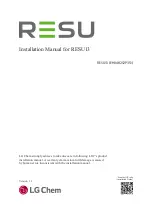
500300 Rev. U
Operating Instructions
3-13
2.
Raise the top cover by lifting it up at its front corners just behind the bezel as
shown in Figure 3-11.
Figure 3-11 Raising the Top Cover
3.
When fully open, the cover latch will hold it up. You may have to extend the
drive further out from the rack.
4.
Carefully thread the end of the tape back through the tape path and onto the
supply reel such that turning the reel counterclockwise winds the tape onto it.
Moistening the end of the tape helps it to stick to the reel hub.
5.
Continue winding the tape onto the reel until the EOT marker goes through
the tape path and is on the supply reel. There must be at least ten turns on the
reel.
6.
Press LOAD. The tape drive will then tension and rewind the tape.
7.
Release the cover latch, close the cover, and push the drive back into the rack.
3.7.4
A Power Failure Occurs
Should the power be interrupted while the tape is moving, the drive will bring the
tape to a controlled stop before dropping tape tension. No physical damage will
result to the tape. To recover, restore the power and press LOAD. The drive will
tension and rewind the tape to BOT. If a block were being written at the time of the
power loss, the block would be lost.
3.7.5
A Tape Runaway Condition Occurs
A runaway is a condition in which the tape drive does not respond to host commands
and the tape keeps moving. When using the Industry Standard Interface, tape
runaways are usually caused by an abnormal condition in the host. If the
COMMAND DISPLAY parameter in the Drive Configuration menu is enabled, the
display will indicate the last command received by the drive (see Section 4.3.2 for
more information). When using the SCSI configuration, a tape runaway indicates a
problem within the tape drive.
Other than turning the drive power off and back on, there are two methods to
recover from a tape runaway. These are described in the following paragraphs.
















































